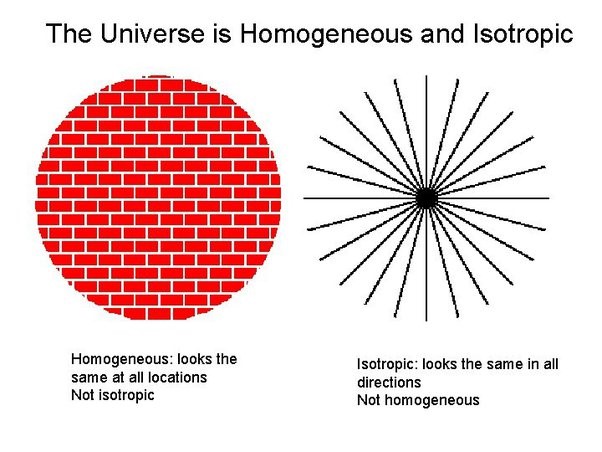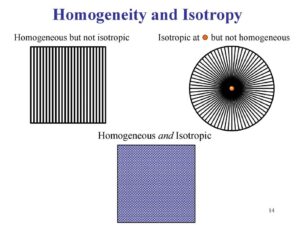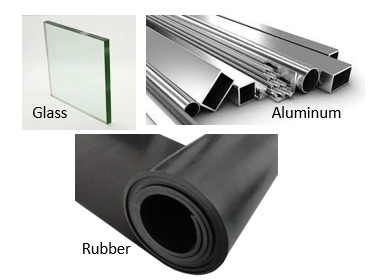The Complete Guide to Exploring Isotropic Material Properties
Isotropic material properties refer to the characteristics of a material that are independent of direction. In other words, their mechanical and physical characteristics, such as elasticity, thermal expansion, and conductivity, are the same regardless of the direction in which they are measured. Isotropic materials exhibit the same response to stress, strain, and other external factors, making their behavior predictable and uniform in all orientations.
For example, consider a solid cube made of an isotropic material. When subjected to mechanical loading, the cube will deform uniformly in all directions, and the resulting stress and strain will be the same regardless of the orientation of the applied forces. That means, the response to applied forces or stimuli is the same regardless of the direction in which they are applied. For example, if a force is applied to an isotropic material along the x-axis, the resulting deformation or strain will be the same as if the force were applied along the y-axis or z-axis. Similarly, the thermal expansion and conductivity will be the same in all directions, and the material will exhibit the same electrical and magnetic properties in any direction.

Homogeneous materials have uniform properties throughout their structure. This means that their composition and characteristics, such as density, composition, and mechanical properties, are consistent and identical in all regions. In other words, there are no variations or gradients in their material properties within the material itself.
In summary, isotropic materials have consistent properties in all directions, while homogeneous materials have uniform properties throughout their structure without any variations or gradients.

Here the details of material properties are mentioned below:
- Elastic Modulus: The elastic modulus, also known as Young’s modulus, is a measure of a material’s stiffness. In an isotropic material, the elastic modulus is the same in all directions, meaning it has the same resistance to deformation in any direction.
- Thermal Conductivity: Thermal conductivity is a property that describes a material’s ability to conduct heat. In an isotropic material, the thermal conductivity is uniform in all directions, meaning heat transfers at the same rate regardless of the direction of heat flow.
- Electrical Conductivity: Electrical conductivity refers to a material’s ability to conduct electric current. In an isotropic material, the electrical conductivity is the same in all directions, allowing for uniform electrical conduction throughout the material.
- Magnetic Permeability: Magnetic permeability is a measure of how easily a material can be magnetized in the presence of a magnetic field. In an isotropic material, the magnetic permeability is constant in all directions, indicating the same response to magnetic fields regardless of orientation.
- Density: Density represents the mass per unit volume of a material. In an isotropic material, the density remains the same regardless of the direction in which it is measured.
These are just a few examples of isotropic material properties. It’s important to note that these properties are idealized assumptions and may not hold true for all materials in reality. Different materials can have varying degrees of isotropy or anisotropy, depending on their composition, crystal structure, and manufacturing processes.
Isotropic material properties are represented by 2 independent variables i.e., Young’s modulus and Poisson’s ratio and is represented in equation as mentioned below form:


Isotropic materials are often used as simplifying assumptions in engineering and scientific analyses because they are easier to work with mathematically and provide a good approximation for many practical applications. Common examples of isotropic materials include many metals (e.g., aluminum, steel), certain polymers, and some ceramic materials.
Here are some common examples of isotropic materials:
Glass: Most types of glass, such as window glass or soda-lime glass, are considered isotropic. They exhibit the same physical properties, such as optical transparency and mechanical strength, in all directions.

Aluminum: Aluminum and its alloys, including commonly used ones like 6061 and 7075, are generally considered isotropic. They have consistent mechanical properties, such as stiffness and strength, in all directions.
Polycarbonate: Polycarbonate is a transparent thermoplastic material widely used in applications such as safety glasses and bulletproof windows. It is isotropic and exhibits consistent properties throughout.
Rubber: Certain rubber materials, such as natural rubber or synthetic elastomers like neoprene, can be considered isotropic. They possess similar properties in all directions, including elasticity and resilience.
Polyethylene: Polyethylene, a widely used thermoplastic material, can exhibit isotropic behavior depending on its manufacturing process and grade. It is commonly used in packaging, pipes, and other applications.
Acrylic: Acrylic, also known as PMMA (polymethyl methacrylate), is a transparent thermoplastic material that is often used as a substitute for glass. It is typically isotropic and has consistent properties in all directions.
Isotropic materials are often used as simplifying assumptions in engineering and scientific analyses because they allow for easier calculations and predictions. Some examples of isotropic materials include many metals, certain polymers, and some ceramic materials. It’s important to note that while these materials are generally considered isotropic, specific manufacturing processes, additives, or material modifications can introduce some level of anisotropy in certain cases. Additionally, it’s always advisable to consult material specifications and conduct testing to confirm the isotropic behavior of a specific material.




